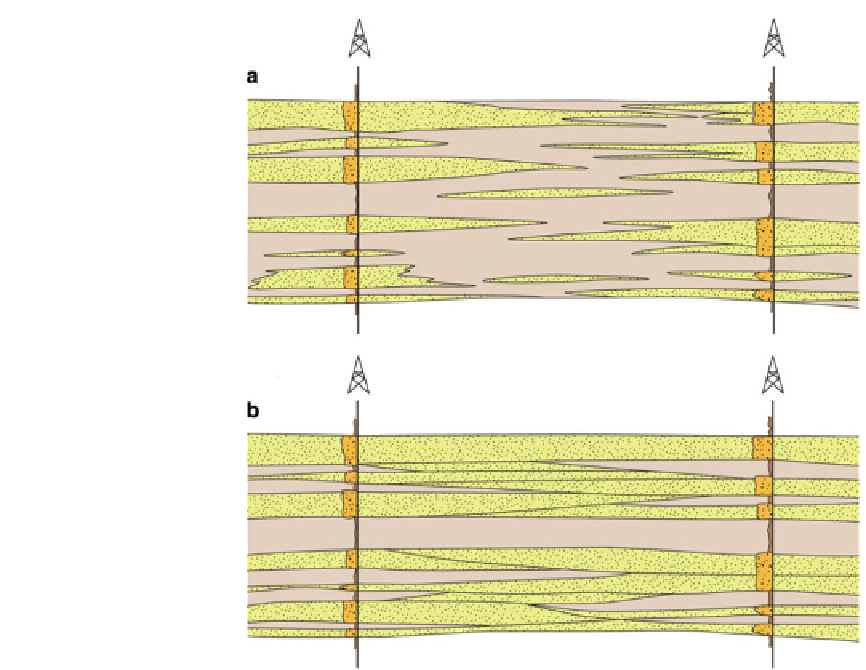Geoscience Reference
In-Depth Information
Fig. 6.8
Finding the
connecting medium:
comparing the length scale
of the heterogeneity with
the length scale of the
development question (in
this case, the well spacing).
In (
a
) the connecting
medium is the poor quality
element, whereas in (
b
) the
good quality elements are
connecting
6.1.5 Laminae-Scale Effects
fluctuations, as exemplified by the work of
Meadows on Triassic reservoirs of the Irish Sea
(e.g. Meadows and Beach
1993
). As these trends
are operating on a regional (basin) scale, high
degrees of correlation within-field can occur.
Productivity is driven by inter-well connectivity
along correlatable dry-dune belts, such as that
shown in Fig.
6.7
(lower image).
On a regional scale, even without base level
changes, effective permeability anisotropy
occurs if the dune systems are themselves
strongly anisotropic (Krystinik
1990
), with effec-
tive permeabilities parallel and perpendicular to
dune ridges varying by up to an order of magni-
tude. Well spacing and preferred sweep
directions are influenced by such anisotropy,
which places value on the interpretation of dune
type, and this can be imparted on reservoir
models
A final important issue for aeolian systems,
characterised by the widespread presence of
fine-scale laminated lithologies, is whether
these laminated elements in the reservoir system
promote capillary trapping effects. That is, are
the multiphase flow effects of strongly
contrasting laminations important and ade-
quately represented in the reservoir model?
This has been studied by Huang et al. (
1995
)
who showed the impact of capillary forces on
both the initial hydrocarbon distribution and the
waterflood oil recovery. The low-permeability
laminae cause a trapping effect due to locally
high water saturations during water-oil displace-
heterogeneity on multiphase flow also depends
on wettability (Huang et al.
1996
), and wettabil-
ity appears to vary - in this case more oil-wet
in the poorer-permeability laminae and more
using
variograms
(for
pixel-based
workflows) or
the superimposition of
trends
(discussed in Chap.
2
).

